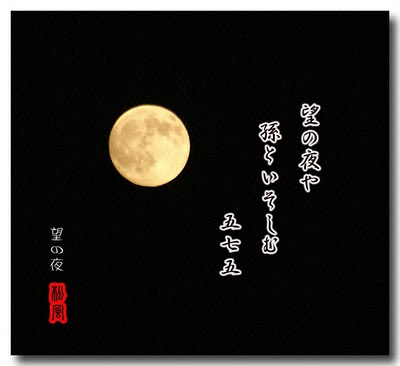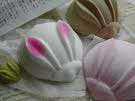:::::::::::::::::::::::::::::::::::::::::::::::::::::::::::::::::::::::::::::::::::::::::::::::::::::
Kyoto 京都 "Hana no Miyako" 花の都
***** Location: Kyoto, Japan
***** Season: Late spring
***** Category: Plant / Humanity

洛中洛外 京は“花の都”か
*****************************
Explanation
"capital of blossoms", hana no miyako 花の都
Kyoto in cherry blossoms, Kyoto during the cherry blossom season
miyako no hana 都の花 the flower of the capital (cherry blossom)
. Cherry blossoms (sakura 桜)
見わたせば柳桜をこきまぜて
都ぞ春の錦なりける
miwataseba yanagi sakura o kokimazete
miyako zo haru no nishiki narikeru
gazing over the capital
green willow threads entwine
soft red cherry blossoms
as if the Heian capital
had spread a spring brocade
The Monk Sosei 素性法師 (around 910)
Kokin Wakashu Poetry Collection 古今和歌集

source : yoshida sanso.com
Kaiseki meal in memoriam of the above waka poem.
. Poetry and Japanese Food .
:::::::::::::::::::::::::::::::::::::::::::::::::::::::::::::::::::::::::::::::::::::::::::::::::::

Kyoto 京都
Heian-kyō, Heiankyoo 平安京 Heiankyo
"capital of tranquility and peace "
became the seat of Japan's imperial court in 794, beginning the Heian period of Japanese history. In Japanese, the city has been called
Kyo (京), Miyako (Miako) (都) or Kyo no Miyako (京の都).
Keishi (京師), meaning "metropolis".
© More in the WIKIPEDIA !
. Welcome to the Heian Period ! 平安時代 .
蚊柱の穴から見ゆる都哉
ka-bashira no ana kara miyuru miyako kana
through a hole
in the mosquito swarm...
Kyoto
Tr. David Lanoue
The mosquitoes are swarming in a column (ka-bashira).
The "capital" (miyako) was Kyoto in Issa's day. This is where the emperor and his court lived. Political and military power was centered in the Shogun's city of Edo, today's Tokyo. Sakuo Nakamura pictures Issa, as he approached Kyoto, feeling heavy pressure to do well in this cultural and literary center. "Those pressures stood before him like a mosquito swarm."
Tr. David Lanoue
Kobayashi Issa 小林一茶
. WKD - Discussion of the translation .
:::::::::::::::::::::::::::::::::::::::::::::::::::::::::::::::::::::::::::::::::::::::::::::::::::::
. Fushimi 伏見 .
visited by Matsuo Basho and Yosa Buson.
:::::::::::::::::::::::::::::::::::::::::::::::::::::::::::::::::::::::::::::::::::::::::::::::::::::
Rakuchuu (洛中) Central Kyoto
洛中に桔梗の花が三日咲
Rakuchu ni kikyoo no hana ga mikka saki
in central Kyoto
bellflowers boom
three days long
Haifu Yanagidaru Senryu Collection 誹風柳多留

Temple Daikomyo-Ji 大光明寺
:::::::::::::::::::::::::::::::::::::::::::::::::::::::::::::::::::::::::::::::::::::::::::::::::::::
Shimogyo-ku (下京区)
is one of the eleven wards in the city of Kyoto.
First established in 1879 as an administrativev unit, it has been merged and split, and took on its present boundaries in 1955, with the establishment of a separate Minami-ku.
Kyoto Tower and Kyoto Station are major landmarks in Shimogyo-ku.
Shimogyo-ku has a population of 74,897 and an area of 6.82 km². Three rivers, Horikawa, Kamogawa and Takasegawa, are in the ward.
© More in the WIKIPEDIA !
下京や闇いうちから花の春
shimogyô ya kurai uchi kara hana no haru
Shimogyo Town--
in the dark before dawn
spring blossoms
. . . . .
下京の窓かぞへけり春の暮
shimogyô no mado kazoe keri haru no kure
counting the windows
of Shimogyo Town...
spring dusk
Kobayashi Issa
Tr. David Lanoue
:::::::::::::::::::::::::::::::::::::::::::::::::::::::::::::::::::::::::::::::::::::::::::::::::::::
Nishiyama 西山 "Western Mountains"
西山や袷序の神だのみ
. nishiyama ya awase tsuide no kami tanomi .
Kobayashi Issa
:::::::::::::::::::::::::::::::::::::::::::::::::::::::::::::::::::::::::::::::::::::::::::::::::::::
Bridges 橋 hashi

shijoo oohashi 四条大橋 big bridge at Shijo

gojoo oohashi 五条大橋 big bridge at Gojo
. Ushiwaka-maru and Benkei at Gojo Bridge .
春水や四条五条の橋の下
shunsui ya Shjoo Gojoo no hashi no shita
water of spring -
at Shijo and Gojo
under the bridges
. water in spring, haru no mizu 春の水 .

source : www.nichibun.ac.jp/meisyozue
Bungobashi 豊後橋 Bungo-bashi Bridge
now Kangetsukyoo 観月橋 Kangetsu-kyo Bridge in Fushimi ward 伏見, spanning the Yodogawa river 淀川.
This bridge has already been there in the Kamakura period under the name Katsurabashi 桂橋
Ryoogunbashi 両郡橋 or Shigetsubashi 指月橋).
Later it was rebuilt by Toyotomi Hideyoshi at a length of about 200 meters and called Bungobashi. During the Edo period, the pillars were replaced about 18 times.
asagiri ya enokoro hitotsu Bungobashi
Misty morning.
The sleeping Bungo-bridge
is crossed by a puppy.
Tr. ? - source Terebess
. Yosa Buson 与謝蕪村 .
:::::::::::::::::::::::::::::::::::::::::::::::::::::::::::::::::::::::::::::::::::::::::::::::::::::
Oohara 大原 Ohara Kyoto
quote
Ohara is a rural town nestled in the mountains of northern Kyoto, about one hour from Kyoto Station, but still technically located within Kyoto's city limits. Ohara is best known for Sanzenin Temple and particularly popular in mid November during the autumn leaf season, which typically occurs about one week earlier than in central Kyoto.
Otonashi Waterfall
Jakkoin Temple
Jikkoin Temple
Hosenin Temple
Raigoin Temple
Shorinin Temple
source : www.japan-guide.com

by Kitao Shigemasa 北尾重政
Ohara is also famous for the "women from Ohara", ooharame 大原女, Oharame, who used to carry vegetabels and firewood to the market in Kyoto and make a good living.
. 大原女 Oharame and Shibazuke 柴漬け pickles .
observance kigo for late winter
oohara zakone 大原雑魚寝 (おおはらざこね)
sleeping together at Ohara
.... zakone 雑魚寝(ざこね) "group sleep"
"like all kind of fish", all crowded together
on the night before setsubun, February 3 at shrine 江文神社 Ebumi Jinja
This is the night of the zakone in Ohara,when all the people of the village, young and old of both sexes, masters and servants, all are allowed to lie down together and sleep in the Ebumi shrine. It is a kind of vigil before setsubun, a religious custom, and for once no restrictions whatsoever are placed on what the sleepers may venture to do. Many couples found together on this night.
This is based on a legend of a large man-eating snake, which came down to the village when hungry, and the villagers all bundled together to be safe.
But it has been forbidden to do this since the Meiji period.
The custom of zakone is also alive in other temples and shrines in Japan, sometimes during O-Bon in autumn or on the last night of the year.
から人と雑魚寝もすらん女かな
karabito to zakone mo suran onna kana
lying down together
with people from China -
these women
Kobayashi Issa 一茶
Tr. Gabi Greve
.................................................................................
にしき木の立聞きもなき雑魚寝かな
nishiki ki no tachigiki mo naku zakone kana
. Yosa Buson 与謝蕪村 in Edo .
.................................................................................
雑魚寝布団夢の豺狼越え歩く
zakonebuton yume no sairoo koe-aruku
Takada Chooi 高田蝶衣
(1886−1930)
:::::::::::::::::::::::::::::::::::::::::::::::::::::::::::::::::::::::::::::::::::::::::::::::::::::
tetsugaku no michi 哲学の径 / 哲学の道
The Philosopher's Path
Der Philosophenweg, Heidelberg, Germany is the original.
The Philosopher's Walk, Philosoper's Road
a pedestrian path that follows a cherry-tree-lined canal in Kyoto, between Ginkaku-ji and Nanzen-ji. The route is so-named because the influential 20th century Japanese philosopher and Kyoto University professor Nishida Kitaro is thought to have used it for daily meditation. It passes a number of temples and shrines such as Hōnen-in, Ōtoyo Shrine, and Eikan-dō Zenrin-ji. It takes about 30 minutes to complete the walk, although many people spend more time visiting the sights along the way. On the norther part of the walk, there are good views of the nearby Daimonji. The walk is a popular destination for tourists and locals, especially during hanami.
quote : More in the WIKIPEDIA !
はつ冬の哲学の径一詩人
hatsufuyu no tetsugaku no michi ichi shijin
beginning of winter
on Philosopher’s Road
one poet
Sakiko Fujishima 藤島咲子
source : Tr. Fay Aoyagi
quote
Der Philosophenweg
ist ein circa zwei Kilometer langer, vor allem zu Beginn sehr steiler Weg, der vom Heidelberger Stadtteil Neuenheim auf den Heiligenberg führt. Er liegt damit dem Heidelberger Schloss am Königstuhl direkt gegenüber und ist eine der Sehenswürdigkeiten Heidelbergs.
© More in the WIKIPEDIA !
東の東山山麓の細い道が、ドイツ・ハイデルベルクの
「哲学者の道」と地形がそっくりともいわれる.
Philosopher's Walk
a squirrel in the path
looking to and fro
Chen-ou Liu
Ajax, Ontario, Canada
source : haibuntoday.com
.................................................................................
Place names in Sakyo 京都市右京区
. Omuro 御室 .
:::::::::::::::::::::::::::::::::::::::::::::::::::::::::::::::::::::::::::::::::::::::::::::::::::::::

Modern Kyoto in Winter
Tokuriki Tomikichiro (1902-2000)
*****************************
Things found on the way

. Arashiyama 嵐山 "Storm Mountain" .
. Chishaku-In 智積院 Temple in Higashiyama .
京都府京都市東山区東瓦町964
. Higashiyama Culture 東山文化
Higashiyama, Kyoto
. Horikawa 堀川 River Horikawa .
. Jizo Bosatsu 地蔵菩薩 Statues in Kyoto .
. Kameyama 亀山 "Turtle Mountain" - 亀岡 Kameoka .
Kameyama dono 亀山殿 Retreat Palace Kameyama and Tenryuuji 天竜寺 Tenryu-Ji.
.......................................................................
. WASHOKU - Kyoto Food and Kaiseki Ryori 懐石料理
. . . . . . Kyooyasai 京野菜 Kyo-yasai vegetables from Kyoto
. . . . . . mitarashi dango 御手洗団子 rice dumplings
from Shimogamo
.......................................................................
. Kyoto Folk Art - 京都 民芸 - Introduction .
. . . . . . Kyoto tsuchi ningyoo 京都土人形 clay dolls
. . . . . . Kyoto no dorei 京都の土鈴 clay bells .
.......................................................................
. Shrines and Temples from Kyoto .
Welcome to visit shrines and temples of Japan !
*****************************
HAIKU
. Matsuo Basho 松尾芭蕉 - Archives of the WKD .
京までは まだ半空や 雪の雲
Kyoo made wa mada nakazora ya yuki no kumo
until Kyoto
it is just half-way -
clouds with snow
Matsuo Basho, 44 years old (笈の小文)
written at Narumi 鳴海
. . . . .

source : suisai-blog.com
京にても 京なつかしや 時鳥
Kyoo ni te mo Kyoo natsukashi ya hototogisu
even when in Kyoto
I long for Kyoto -
hototogisu
Tr. Gabi Greve
Matsuo Basho
stayed at Genjuu-An 幻住庵 Genju-An in Shiga in the year Genroku 3 (1690),
but had been to a visit in Kyoto.
This haiku has the cut marker YA at the end of line two and the name of the bird,
hototogisu, as the last line.
Even in Kyoto --
hearing the cuckoo's cry --
I long for Kyoto.
Tr. Robert Hass
Bird of time –
in Kyoto, pining
for Kyoto.
Tr. Lucien Stryk
. Little Cuckoo, Cuculus poliocephalis,
hototogisu ホトトギス, 時鳥 .
.............................................................................
塩にしてもいざ言伝ん都鳥
. shio ni shi te mo iza kotozuten Miyako-dori .
miyakodori 都鳥 hooded gull lit. "bird of the capital"
Larus ridibundus.
kigo for all winter
.............................................................................
天秤や京江戸かけて千代の春
. tenbin ya Kyō Edo kakete chiyo no haru .
balancing Kyoto and Edo on a giant scale
. Matsuo Basho 松尾芭蕉 - Visiting Kyoto .
. Basho-An 芭蕉庵 in Kyoto
temple Konpuku-Ji 金福寺 / 金福寺 . .
Paintings about Basho from the Kyoto Museum Collection
京都国立博物館所蔵
source : www.bashouan.com
:::::::::::::::::::::::::::::::::::::::::::::::::::::::::::::::::::::::::::::::::::::::::::::::::::::
. Kobayashi Issa 小林一茶 - Cultural keywords .
のらくらや花の都も秋の風
norakura ya hana no miyako mo aki no kaze
loafing around -
even in the capital of blossoms
now autumn wind
Kobayashi Issa, 1816
Maybe Issa stayed in Edo ?
Issa stayed in Edo not in Kyoto. So I think 花の都 is not necessary to be Kyoto.
Nakamura Sakuo Haiga
. . . . .
行秋やすでに御釈迦は京の空
yuku aki ya sude ni o-shaka wa kyoo no sora
autumn ends--
already the Buddha
fills Kyoto's sky
or
autumn ends--
already the statue of Buddha Shakamuni
is under the sky of Kyoto
Tr. Gabi Greve
In a prescript to this haiku, Issa alludes to an image of Gautama Buddha being returned to its temple in Kyoto.
Seiryooji 清涼寺 Temple Seiryo-Ji, Shakado 釈迦堂 in Saga, Kyoto, is quite famous for the statue of Gautama Shakyamuni which is about 160 cm high and rather simple in a robe of Indian style of Gandhara Buddhas. It was made in China and had the intestines made of silk inside.

The statue had been shown at the temple Eko-In 回向院 (Ekooin) in Edo in 1810.
More about the temle Seiryoji and haiku
. Saga 嵯峨 Spring Festivals .
- - - - -
京辺や冬篭さへいそがしき
miyakobe ya fuyugomori sae isogashiki
Kyoto people
stay busy outside
all winter long
Tr. Chris Drake
This hokku was written in the 11th month (December) of 1816, when Issa had left his hometown for a while and traveled back to Edo to see poets there. The difference between his hometown and Edo must have been extreme in winter. In Edo people went outside and kept busy during the whole winter, unlike the home confinement people experienced during much of the winter in the snow country, in which Issa's hometown was located. In this hokku, however, Issa evokes not Edo, the location of the shogun's castle and actual center of power in Japan, but the ancient capital of Kyoto, nominally the capital though the "reigning" emperor or empress was merely a figurehead. Perhaps Issa focuses on Kyoto because even more important annual events were scheduled there than in busy Edo.
In addition to being the site of a diligent court that continuously carried out empty rituals, Kyoto had hundreds of Buddhist temples, many of them the head temple of their school, and perhaps even more Shinto shrines. Numerous important ceremonies, festivals, performances, and events took place there every single day throughout the winter, and Kyoto's thriving economy also continued to operate at a rapid pace. To speak of "winter confinement" in Kyoto is a contradiction in terms, and the phrase was used there and in the other larger cities of Issa's time mainly as an elegant euphemism for staying indoors a bit more in winter.
Chris Drake
. Kobayashi Issa 小林一茶 .
:::::::::::::::::::::::::::::::::::::::::::::::::::::::::::::::::::::::::::::::::::::::::::::::::::::
. Yosa Buson 与謝蕪村 .
ほととぎす平安城を筋違(すじかい)に
hototogisu Heianjoo o sujikai ni
this cockoo -
it criss-crosses over
Heiankyo
御火焚や霜うつくしき京の町
ohitaki ya shimo utsukushiki kyoo no machi
bonfire ceremony -
the frost is so beautiful
in the town of Kyoto
. Bonfire ceremony (ohitaki 御火焚)
:::::::::::::::::::::::::::::::::::::::::::::::::::::::::::::::::::::::::::::::::::::::::::::::::::::
Many more haiku about Kyoto and Miyako are here
(waiting to be translated . . .)
上京 / 京(みやこ) / 京より / 京中 / 京人 / 京洛 / 京舞
and many more keywords
- source : HAIKUreikuDB - database
:::::::::::::::::::::::::::::::::::::::::::::::::::::::::::::::::::::::::::::::::::::::::::::::::::::

plant kigo for early summer
miyakogusa 都草 (みやこぐさ) "capital plant"
It used to grow wild around the capital of Kyoto in the old days.
Now it is found everywhere in Japan. Its yellow flowers look like enchanted butterflies.
Lotus corniculatus
is a common flowering plant native to grassland temperate Eurasia and North Africa. The common name is Bird's-foot Trefoil (or similar, such as "birdsfoot trefoil"), though the common name is often also applied to other members of the genus. It is also known in cultivation in North America as Birdfoot Deervetch.
© More in the WIKIPEDIA !
*****************************
Related words
***** . miyako odori 都踊 Miyako Dance
kigo for late spring
.................................................................................
- - - - - Further festivals as kigo from the Kyoto region:
. Ama no Hashidate Matsuri 天の橋立祭 .
. Kitano natane goku 北野菜種御供 ritual for rapeseed blossoms .
. Kushi Matsuri 櫛祭り Kushi Comb Festival .
. mikage matsuri 御蔭祭 "honorable shadow festival" .
. Seimei Matsuri 晴明祭 Seimei Festival .
. WKD - Kyoto Festivals 京都の祭り .
. Kyoto Festivals in April
:::::::::::::::::::::::::::::::::::::::::::::::::::::::::::::::::::::::::::::::::::::::::::::::::::::::::::::::::::::::::::
***** Nara 奈良 the ancient capital
***** . Gosho Imperial Palace in Kyoto 京都御所 .
***** . Fudōdōchō 不動堂町 FudoDo-Cho .
***** . Rashoomon 羅生門 Rashomon Gate .
***** . Shishinden 紫宸殿 Hall for State Ceremonies .
***** . Place names used in haiku
.......................................................................

Hana no Oedo 花の大江戸
***** Edo 江戸, The City That Became Tokyo
We also have the expression : the thriving city of Edo
hana no o-Edo, the flourishing town of Edo
花の大江戸
時鳥花のお江戸を一呑に
hototogisu hana no o-edo o hito nomi ni
oh cuckoo--
swallow blossom-filled Edo
in a gulp!
初夢の不二の山売る都哉
hatsu yume no fuji no yama uru miyako kana
year's first dream--
Mount Fuji is sold
in Kyoto
Kobayashi Issa
Tr. David Lanoue
.................................................................................
鐘一つ 売れぬ日はなし 江戸の春
kane hitotsu urenu hi wa nashi Edo no haru
spring in Old Edo -
not a day without a
temple bell sold
寶井其角 Takarai Kikaku (1661-1707)
. Temple Bells and Haiku
Read more details of this poem :
- - - discussion from Translating Haiku
:::::::::::::::::::::::::::::::::::::::::::::::::::::::::::::::::::::::::::::::::::::::::::::::::::::::::::::::::::::::::::
A kind of "Backup" of this page can be found here, dating from March 2016:
Gabi Greve on Kyoto
- source : writers in kyoto -
[ . BACK to DARUMA MUSEUM TOP . ]
[ . BACK to WORLDKIGO . TOP . ]
:::::::::::::::::::::::::::::::::::::::::::::::::::::::::::::::::::::::::::::::::::::::::::::::::::::::::::::::::::::::::::






























